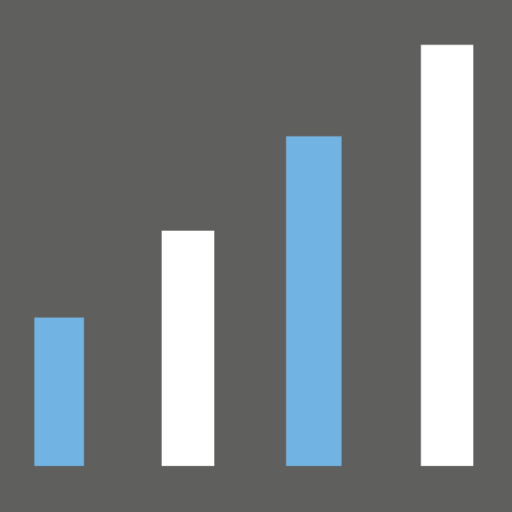Table of Contents
Market Overview
The global Point of Care Diagnostic Devices Market is experiencing significant growth, propelled by the increasing need for rapid and accurate diagnostic testing at or near the site of patient care. Point-of-care (POC) diagnostics offer numerous advantages, including faster turnaround times, reduced costs, and improved patient outcomes. These devices are used in various settings, such as clinics, hospitals, and laboratories, enabling healthcare professionals to make timely decisions and initiate appropriate treatment plans. The Point of Care Diagnostic Devices Market encompasses a wide range of tests, including blood glucose testing, infectious diseases testing, cardiac markers testing, and coagulation testing. The market is driven by technological advancements, increasing prevalence of chronic diseases, and growing demand for decentralized healthcare services.
Market Size and Forecast
The global Point of Care Diagnostic Devices Market is projected to grow from US$ 19080 million in 2024 to US$ 30640 million by 2030, at a Compound Annual Growth Rate (CAGR) of 8.2% during the forecast period. This growth is attributed to the increasing adoption of POC diagnostics in various healthcare settings and the rising demand for rapid and accurate testing. The Point of Care Diagnostic Devices Market is expected to continue its upward trajectory as technological innovations enhance the performance and accessibility of POC devices.
Growth Drivers
Several key factors are driving the expansion of the Point of Care Diagnostic Devices Market. The increasing prevalence of chronic diseases, such as diabetes and cardiovascular diseases, is boosting the demand for POC testing to facilitate timely monitoring and management. The need for rapid and accurate diagnosis of infectious diseases, particularly in remote or resource-limited settings, is also driving market growth. Technological advancements in POC devices, such as miniaturization and improved connectivity, are enhancing their usability and performance. Additionally, the growing trend towards decentralized healthcare and the shift towards value-based care are fueling the adoption of POC diagnostics.
| Growth Driver | Description | Impact |
|---|---|---|
| Chronic Disease Prevalence | Increasing rates of diabetes, cardiovascular diseases, etc. | Higher demand for POC testing for monitoring and management. |
| Infectious Disease Diagnosis | Need for rapid and accurate diagnosis in various settings. | Greater adoption of POC devices for infectious disease testing. |
| Technological Advancements | Miniaturization, improved connectivity, and enhanced usability. | Increased accessibility and performance of POC devices. |
Market Trends
Several noteworthy trends are shaping the Point of Care Diagnostic Devices Market. There’s a growing emphasis on multiplex testing, which allows for the simultaneous detection of multiple analytes in a single sample. The integration of connectivity solutions, such as Bluetooth and Wi-Fi, is enabling seamless data transfer and remote monitoring. The development of user-friendly and portable POC devices is enhancing their appeal in various healthcare settings. Additionally, there’s an increasing focus on quality control and regulatory compliance to ensure the accuracy and reliability of POC testing.
Opportunities in the Market
The Point of Care Diagnostic Devices Market offers numerous opportunities for manufacturers and healthcare providers. Expanding the use of POC diagnostics in home healthcare settings can empower patients to manage their conditions more effectively. Developing POC devices that can be used for early disease detection and prevention can improve health outcomes. Targeting emerging markets with limited access to traditional laboratory services can address critical diagnostic needs. Investing in research and development to expand the range of analytes that can be tested using POC devices can further drive market growth. Additionally, offering comprehensive training and support services to healthcare professionals can facilitate the successful implementation of POC testing programs.
Regional Analysis
North America currently holds a significant share of the global Point of Care Diagnostic Devices Market, driven by advanced healthcare infrastructure and high adoption rates of POC testing. Europe also represents a substantial market, with increasing investments in healthcare technology and a growing emphasis on decentralized care. The Asia Pacific region is expected to witness the fastest growth, fueled by the increasing prevalence of chronic diseases and the expanding healthcare sector in countries like China and India. South America and the Middle East & Africa are also emerging as potential markets, with growing healthcare expenditure and increasing awareness of the benefits of POC diagnostics. Tailoring product offerings to meet the specific needs of each region will be crucial for market success.
| Region | Key Factors | Market Share |
|---|---|---|
| North America | Advanced infrastructure, high adoption of POC testing | Significant |
| Europe | Investments in healthcare technology, decentralized care | Substantial |
| Asia Pacific | Increasing chronic diseases, expanding healthcare sector | Fastest Growing |
Segmentation by Type
The Point of Care Diagnostic Devices Market is segmented by type into blood glucose testing, infectious diseases testing, cardiac markers testing, coagulation testing, pregnancy and fertility testing, blood gas/electrolytes testing, and tumor markers testing. Blood glucose testing currently dominates the market, driven by the high prevalence of diabetes and the need for frequent monitoring. Infectious diseases testing is also a significant segment, particularly in light of recent global health crises. Cardiac markers testing is gaining traction due to the increasing incidence of cardiovascular diseases. Other segments, such as coagulation testing and tumor markers testing, are expected to experience steady growth as POC technology expands to cover a wider range of diagnostic applications.
Segmentation by Application
Based on application, the Point of Care Diagnostic Devices Market is segmented into clinics, hospitals, laboratories, and others. Hospitals represent the largest application segment, as they require POC testing for a wide range of clinical needs. Clinics are also a significant segment, particularly for primary care and routine testing. The use of POC devices in laboratories is expanding, as they can streamline workflows and reduce turnaround times. The “others” segment includes applications in home healthcare, emergency medical services, and research settings. The growth in these application segments reflects the increasing versatility and utility of POC diagnostics across the healthcare spectrum.
Competitive Landscape
The global Point of Care Diagnostic Devices Market is characterized by the presence of several key players, including Roche, Abbott, LifeScan, Siemens Healthineers, Danaher, Ascensia, BioMerieux, ARKRAY, Sinocare, Wondfo, Yuwell, Runbio, KHB, Wuhan Easy Diagnosis, J.H.Bio-Tec, Getein Biotech, ReLIA, BIOUHAN, Beijing Wantai BioPharm, and Hotgen. These companies are focusing on product innovation, strategic partnerships, and geographic expansion to strengthen their market positions. Competition is intensifying as more players enter the market, driven by the increasing demand for POC diagnostics. Key competitive strategies include offering a diverse product portfolio, focusing on technological advancements, and expanding distribution channels to reach a wider customer base.
| Company | Key Strategies | Market Focus |
|---|---|---|
| Roche | Product innovation, strategic collaborations | Infectious disease testing, diabetes management |
| Abbott | Technological advancements, global expansion | Cardiovascular diagnostics, point-of-care solutions |
| Siemens Healthineers | Comprehensive solutions, integrated systems | In vitro diagnostics, workflow optimization |
Demand Forecast
The demand for Point of Care Diagnostic Devices is expected to remain strong throughout the forecast period, driven by the factors outlined above. The increasing prevalence of chronic and infectious diseases, the growing emphasis on rapid and accurate diagnosis, and the shift towards decentralized healthcare are all contributing to the sustained demand for POC testing. The market is also expected to benefit from ongoing technological advancements and the development of new and innovative products that offer improved performance and convenience. Overall, the demand forecast for the Point of Care Diagnostic Devices Market remains highly positive, with significant opportunities for growth and expansion.
Challenges and Restraints
Despite the favorable outlook, the Point of Care Diagnostic Devices Market faces certain challenges and restraints. One major challenge is ensuring the accuracy and reliability of POC testing, particularly when performed by non-laboratory personnel. Another challenge is maintaining quality control and regulatory compliance in decentralized testing settings. Additionally, the market faces competition from traditional laboratory testing services, which may offer a wider range of tests and greater analytical capabilities. Addressing these challenges through standardization, training, and robust quality assurance programs will be essential for sustained market growth.
Future Outlook
The future of the Point of Care Diagnostic Devices Market looks promising, with continued growth and innovation expected in the coming years. The market is poised to benefit from the increasing adoption of telehealth and remote patient monitoring, which will drive demand for POC devices that can be used in home settings. Technological advancements, such as the integration of artificial intelligence (AI) and machine learning (ML) into POC diagnostics, will further enhance their accuracy and efficiency. As healthcare systems continue to prioritize value-based care and decentralized services, the Point of Care Diagnostic Devices Market is expected to play an increasingly critical role in improving patient outcomes and reducing healthcare costs. Manufacturers that can effectively address the challenges and capitalize on the opportunities will be well-positioned for success in this dynamic and evolving market.
| Aspect | Future Trend | Impact on Market |
|---|---|---|
| Technology | Integration of AI and ML for enhanced diagnostics | Improved accuracy, faster results, personalized testing |
| Connectivity | Seamless data transfer with EHRs and telehealth platforms | Enhanced remote monitoring, better patient management |
| Applications | Expansion into home healthcare and chronic disease management | Increased market reach, greater patient empowerment |



